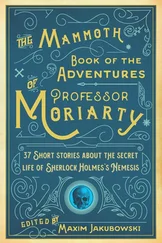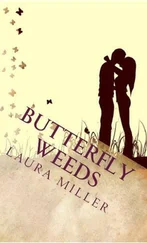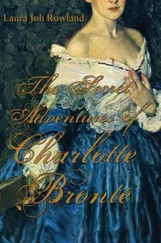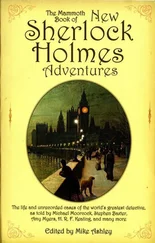In his memoir of his own childhood reading, The Child That Books Built, Francis Spufford describes the effect that the Chronicles had on him when he first read them:
The book in my hand sent jolts and shimmers through my nerves. It affected me bodily. In Narnia, C. S. Lewis invented objects for my longing, gave forms to my longing, that I would never have thought of, and yet they seemed exactly right: he had anticipated what would delight me with an almost unearthly intimacy. Immediately I discovered them, they became the inevitable expressions of my longing. So from the moment I first encountered
The Lion, the Witch and the Wardrobe
to when I was eleven or twelve, the seven Chronicles of Narnia represented essence-of-book to me. They were the Platonic Book of which other books were more or less imperfect shadows.
Which is spookier: that Spufford has so perfectly articulated my own childhood feelings about Narnia, or that Lewis was able to achieve this “unearthly intimacy” with me, Spufford, my Irish hostess, and millions of other young readers? We have very little commentary directly from Lewis himself about what he thought he was doing when he first sat down to write The Lion, the Witch and the Wardrobe. Later in life, he could offer no more illumination than that he was in the grip of an old image (a faun walking through a snowy wood) cherished for decades, and that a “fairy tale” seemed the best form for what he wanted to say. But what exactly he meant by that image, or by any of the rest of it until, rather late in the process, he hit upon the idea of rewriting the Passion of Christ, he could never entirely explain. He wrote the Chronicles in a pell-mell rush, at a time in his life when he was distracted, emotionally taxed, and physically exhausted, in an effort that seems almost haphazard. But just as we sometimes dance best when we are not consciously thinking about the steps, it was in writing the Chronicles of Narnia that Lewis finally managed to do what he had admired for so long in others: create myths.
Chapter Twenty-seven
Further Up and Further In
Of all Lewis’s inventions in the Chronicles, the one that comes closest to his conception of myth is the Wood Between the Worlds in The Magician’s Nephew . Digory’s scheming, vainglorious uncle Andrew tricks Polly into picking up a magic yellow ring that transports her out of our universe, and Digory has no choice but to follow her, carrying the green rings that can bring them both back. The rings are made from the contents of an otherworldly box of dust Uncle Andrew inherited from his godmother (“one of the last mortals in this country who had fairy blood in her”), but he has always been too much of a coward to try them out himself. Uncle Andrew has no appetite for adventure, although he was willing to undergo “disagreeable” experiences with “devilishly queer people” in order to obtain his expertise in magic. He regards sorcery not as romance but as a kind of technology. Like all bad magicians, he is “dreadfully practical” (never a term of praise coming from Lewis).
The yellow ring takes Digory to the Wood Between the Worlds. In this quiet forest, there are small pools beneath the trees every few yards as far as the eye can see. It is warm and bright, although leaves obscure the sky. Digory steps out of one of the pools and finds Polly safe, lying on the grass “just between sleeping and waking.” Eventually, they discover that each pool is a passage to a different world. If you jump into any one of them while wearing a green ring, you will find yourself in another universe; touching the yellow rings takes you back to the Wood.
Before they figure this out, however, the children almost get lost forever. The Wood isn’t a dangerous place, exactly. (Digory and Polly come across one of Uncle Andrew’s previous experimental subjects, a guinea pig, and decide to leave it there, since the magician will only do “something horrid” to it if they bring it back.) But, once in the Wood, people find it easy to forget who they are and where they came from. The narrator speculates that Digory, if asked, would have replied that he had always been there. At first, he and Polly just barely recognize each other and can’t recall why. They are like people trying to remember a dream that is slipping away, but in this case, the dream is real life. The guinea pig is the trigger that brings it all back, but even after they recover themselves, Polly argues against lingering in the Wood, “or we shall just lie down and drowse forever and ever.”
The Wood Between the Worlds owes a little to the “wood where things have no names” in Lewis Carroll’s Through the Looking-Glass. Wandering through that forest, Alice meets a fawn, and for a while they walk together, Alice with her arm around the fawn’s soft neck, until they reach an open field. Out of the wood, the fawn suddenly recalls that it is indeed a fawn, and runs away, leaving Alice on the verge of tears at losing “her dear little fellow-traveler,” but somewhat comforted at having regained her own name. This interlude, a sojourn through that preverbal land where child and beast are reunited, feels like an afterthought and takes less than a page. Perhaps for a writer as fond of wordplay as Carroll, the idea of a wood without words was uninteresting, merely empty.
Although Lewis’s wood has a similar effect on people’s memories, it represents a qualitatively different primeval state. Stories may not happen here, but this is where they are born. Looking around, Digory feels not only as if he “had always been in that place,” but also that he’d “never been bored although nothing had ever happened.” There are no animals or insects, yet the Wood seems charged with vitality: “When he tried to describe it afterward Digory always said, ‘It was a rich place; rich as plumcake.’” This becomes manifest after the children have made an exploratory visit to the world of Charn. Charn’s last empress, the sorceress Jadis, succeeds in hitching a ride back with them, only to find that the air in the Wood — “this horrible place,” as she calls it — suffocates her. If the Wood is dense with life, Jadis, who has killed every other living thing in her own world rather than submit to being conquered by her sister, is an avatar of death; she can’t survive there.
The Wood Between the Worlds shares some traits with other liminal spaces, way stations and thresholds like the bardo of Tibetan Buddhism or the door-lined hallway that Alice tries so hard to get out of in Alice’s Adventures in Wonderland. But unlike other “between” places in myth and fiction, the Wood is both empty and full. It is a unitary moment, containing everything, the pause before a story is told, in which nothing has happened and so anything might. It is not the point of embarkation, but the embarkation itself, the feeling we all experience when we understand that a story is about to begin, the reading mind rendered geographical, like the allegorical medieval self. The pools open into entire worlds, and this, too, is what stories do. They build a world around us as they go along.
On a less abstract level, the Wood is also a library. For someone like Lewis, who lived so much through his reading, each book was potentially a portal to another world. This is one of the chief differences between a child’s experience of a favorite book and an educated adult’s. For the adult, a book may be a work of art, possibly a very great one, but for the child reader, certain books are universes. If we are lucky, we retain some of that capacity to be immersed in a story; Lewis seems to have held on to it better than most, and in this sense, those who describe him as a man who remained a “child at heart” are right. Nevertheless, the adult awareness that a book is a made thing — the work of a human being who, however talented he or she may be, is still only human, and flawed — always takes up some of the imaginative space formerly occupied by total belief. At seven, Neil Gaiman believed the events in the Chronicles to be “true”; now he knows they are “made up.”
Читать дальше












